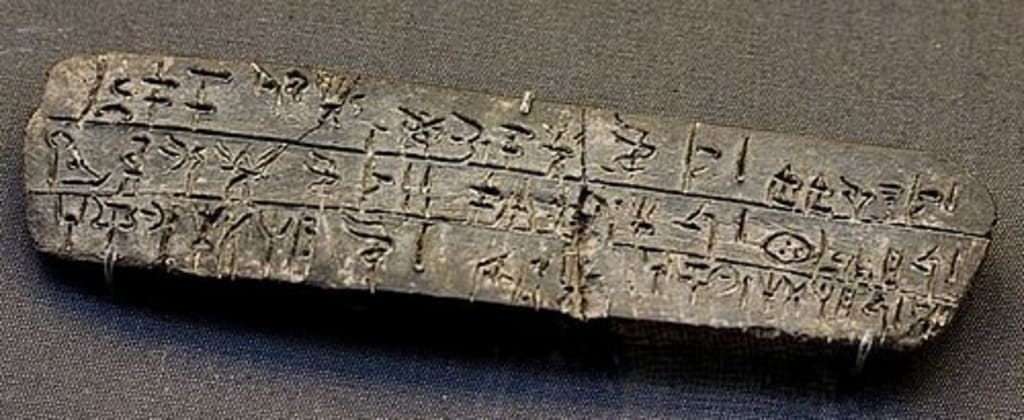Mycenaean Linear B Tablets: Unlocking the Secrets of an Ancient Civilization
History

The Mycenaean Linear B tablets are some of the most significant archaeological discoveries from ancient Greece, providing valuable insights into the administrative, economic, and social aspects of Mycenaean civilization. Dating back to the 13th century BCE, these clay tablets offer a unique glimpse into the early Greek world. This article explores the origins, decipherment, content, and historical significance of the Linear B tablets.
Origins and Discovery
Linear B tablets were used by the Mycenaean civilization, which thrived in mainland Greece and the Aegean from approximately 1600 to 1100 BCE. These tablets were primarily discovered in the ruins of palaces such as Pylos, Knossos (on Crete), and Mycenae.
The first Linear B tablets were uncovered by British archaeologist Sir Arthur Evans in 1900 at the palace of Knossos on Crete. Subsequent excavations revealed more tablets at Pylos and other Mycenaean sites. These discoveries provided the first tangible evidence of a sophisticated writing system used by the Mycenaeans.
Decipherment of Linear B
For decades, the Linear B script remained a mystery, baffling scholars who attempted to decipher it. The breakthrough came in the early 1950s when British architect and self-taught linguist Michael Ventris, building on earlier work by American classicist Alice Kober, successfully deciphered the script.
Ventris demonstrated that Linear B was an early form of Greek, specifically an archaic dialect predating classical Greek by several centuries. This discovery revolutionized our understanding of Mycenaean civilization, establishing a direct linguistic link to later Greek cultures.
Structure and Writing System
Linear B is a syllabic script, meaning each symbol represents a syllable rather than an individual phoneme (sound). The script comprises about 90 syllabic signs and over 100 ideograms. Ideograms are symbols that represent objects or commodities, used to provide context and clarification to the text.
The tablets themselves were made from clay and typically measured a few inches in length and width. They were inscribed using a stylus while the clay was still wet, then baked hard either intentionally or accidentally during the destruction of the palaces.
Content and Themes
The content of the Linear B tablets is predominantly administrative and economic. They record transactions, inventories, and distributions of goods, offering detailed accounts of the Mycenaean palace economy. Key themes and categories found in the tablets include:
- Agricultural Products: Lists of grain, olive oil, wine, and other crops.
- Livestock: Records of cattle, sheep, pigs, and other animals.
- Craft Production: Inventories of textiles, pottery, metalwork, and other manufactured goods.
- Personnel and Labor: Registries of workers, including their roles, rations, and payments.
- Religious Offerings: Accounts of goods dedicated to gods and temples, reflecting the religious practices of the time.
The tablets reveal a highly organized and centralized administration, with the palaces controlling large-scale production and distribution networks.
Historical Significance
The decipherment and study of Linear B tablets have had profound implications for our understanding of Mycenaean Greece:
- Linguistic Heritage: Linear B is the earliest known form of Greek, providing crucial information about the development of the Greek language.
- Economic Insights: The tablets offer a detailed picture of the Mycenaean economy, including agricultural practices, craft specialization, and trade.
- Political Organization: The administrative records highlight the hierarchical and bureaucratic nature of Mycenaean society, with the palatial centers exerting significant control over resources and labor.
- Cultural Continuity: The tablets provide evidence of continuity between Mycenaean and later Greek religious practices, as many gods mentioned in the tablets are recognizable from classical Greek mythology.
Legacy and Influence
The Linear B tablets continue to be a focal point of research in Aegean archaeology and ancient history. They have not only illuminated aspects of Mycenaean civilization but also contributed to broader discussions about the nature of early writing systems and administrative practices.
The study of Linear B has also inspired interest in other undeciphered scripts, such as Linear A, used by the earlier Minoan civilization on Crete. Scholars hope that continued research and new discoveries will further enhance our understanding of these ancient cultures.
Conclusion
The Mycenaean Linear B tablets are invaluable artifacts that have unlocked the secrets of a long-lost civilization. Their decipherment marked a milestone in the study of ancient Greek history, revealing the complexity and sophistication of Mycenaean administration and economy. As ongoing research sheds new light on these ancient texts, the Linear B tablets remain a testament to the enduring legacy of Mycenaean Greece and its contributions to the cultural heritage of the ancient world.
About the Creator
Marveline Merab
“History never repeats itself. Man always does.”
― Voltaire
Enjoyed the story? Support the Creator.
Subscribe for free to receive all their stories in your feed. You could also pledge your support or give them a one-off tip, letting them know you appreciate their work.






Comments
There are no comments for this story
Be the first to respond and start the conversation.